Fracture of the femoral neck
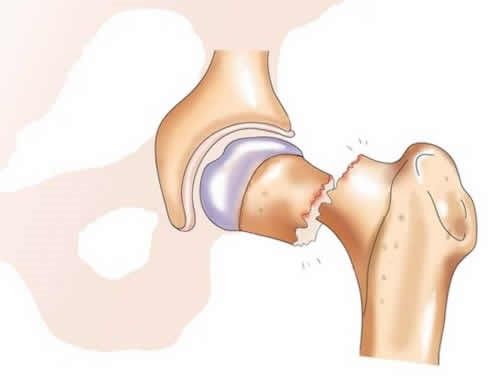 The femoral neck is a narrow and therefore injury—prone part of the femur, sometimes a small impact is enough to fracture it.
The femoral neck is a narrow and therefore injury—prone part of the femur, sometimes a small impact is enough to fracture it.
A hip fracture is a serious injury that in most cases occurs in the elderly, and it occurs 2-3 times more often in women than in men.
The fracture is further complicated by the fact that, for many reasons (structural features, blood supply to the femoral head, the unstable nature of such fractures, and the presence of osteoporosis), bones do not fuse well with this injury.
Often, even after successful osteosynthesis (fastening a broken neck with screws, pins, etc.), necrosis of the head subsequently develops, after which the only correct solution is endoprosthetics — replacement of the joint with an artificial one.Symptoms of hip fracture
There are a number of signs that indicate the possible presence of a femoral neck fracture:
-
pain in the groin area when moving the foot;
-
external rotation of the affected leg relative to the axis;
-
the injured leg is shorter than the healthy one by several centimeters;
- The patient cannot lift the affected limb slightly while lying on his back (a symptom of a "stuck heel").
In rare cases, after an injury, a person retains the ability to move independently for several days. This condition is called a "hammered fracture" of the femoral neck, in which the bones are crushed and wedged into each other. With this condition, there is a small chance of fusion, but due to the lack of timely diagnosis and necessary treatment, it becomes impossible.
As a rule, people seek medical help from a specialist when secondary displacement occurs and severe pain appears. Natural fusion of a cervical fracture with displacement is impossible, therefore, surgical intervention is the only correct solution, since other methods are ineffective.
Diagnostics
Clinical examination, being one of the diagnostic methods, makes it possible to establish a preliminary diagnosis based on the patient's symptoms and complaints. To confirm a fracture of the femoral neck, an X-ray examination is performed, and only on its basis can an accurate diagnosis be made.
Hip Fracture Treatment
Treatment of a femoral neck fracture can be conservative or surgical.Conservative treatment
Due to the structural features of the femoral neck, the bone fuses very poorly. Fusion, including without surgical intervention, is possible only in young patients. In patients of the older age group, the probability of natural fracture fusion, even without displacement, is reduced to zero, as is the effectiveness of conservative treatment. This method is used only in cases where surgical treatment involves risks to life.
If surgical treatment is contraindicated for the patient, therapy in this case consists in ensuring the normal functioning of organs and systems. The injured limb is fixed, so the patient strictly adheres to bed rest for the first few days. The purpose of fixation is to reduce pain by limiting movement in the fracture area. In most cases, it is sufficient to place a soft roller in the popliteal region.
During this period, activity is very important for the patient, which will help prevent the development of hypostatic complications (pneumonia, intestinal obstruction, pressure sores, etc.). It is necessary to sit him on the bed, do breathing exercises, turn him from side to side. The acute pain of a fracture usually resolves after 5-7 days, then the injured leg needs to be lowered from the bed, if possible, to learn to walk on crutches without relying on the injured limb.
Recovery from a hip fracture takes from one to several months.
Surgical treatment of femoral neck fracture
Currently, the following methods are used to treat a fracture surgically:
-
osteosynthesis;
Osteosynthesis is used to fix femoral fragments at the fracture site using metal screws or other structures. If there are no complications, the bone will heal after 4-5 months. During the recovery period, it is necessary to walk on crutches without support on the operated leg.
Osteosynthesis is not performed in patients over the age of 60, as there is a high probability that the fracture will not heal.
Osteosynthesis of the femoral neck is the most effective method, as it allows the patient to quickly get back on his feet, return to his usual lifestyle, and also prevents the development of hypostatic complications.
It should be noted that endoprosthetics is the only correct solution for elderly patients.
After a detailed analysis of the available information (patient's condition, age, degree of physical activity, weight, concomitant diseases), one of the following operations can be performed:
-
total endoprosthetics;
-
prosthetics with a bipolar endoprosthesis;
-
hemiprosthesis prosthetics.
To date, endoprosthetics is a low-trauma technique that takes about an hour and is accompanied by minimal blood loss. Modern endoprostheses allow patients to walk with a full load on the operated leg the very next day and fully recover within 7-8 days.
Rehabilitation after hip fracture
The recovery process of patients after surgical treatment is controlled by rehabilitation physicians, who carry out all necessary rehabilitation measures and provide conditions for the speedy return of patients to their usual lives. These measures make it possible to minimize the negative consequences of a hip fracture and shorten the recovery time after surgery.
Conservative treatment of femoral neck fractures requires the exclusion of support on the injured leg for several weeks, activation within the bed, and learning to move with additional support. When the fusion is reached, an increase in load is allowed.
After osteosynthesis of the femoral bone due to a fracture of the femoral neck, it is also necessary to exclude support on the operated limb for several weeks.
Independent movement remains possible with the help of additional support (crutches or a walker). After a few weeks, as a rule, it becomes acceptable to rely on the injured leg.
Standard rehabilitation after total hip replacement consists in early verticalization — the patient begins to walk independently with a full load on the operated leg the day after the operation. After 5-7 days, the patient is trained to move independently up the stairs. At this stage, the patient is discharged from the hospital.
Why the EMC
The first and only clinic in Russia, created in the image of the world's leading clinics
EMC is a multidisciplinary center offering patients a high level of medical services and a personalized approach
Worldwide recognition and awards
 Learn more
Learn more
Worldwide recognition and awards
 Certificates and licenses
Certificates and licenses
Make an appointment for a consultation
Specify your contacts and we will contact you to clarify the details
Reviews
and new products of the EMC



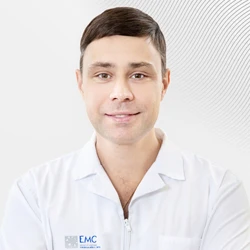
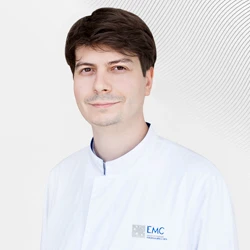
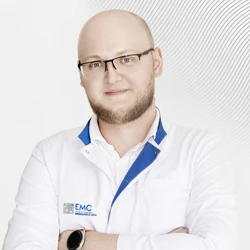

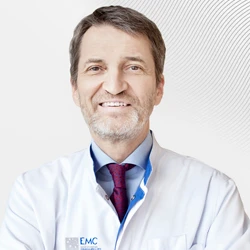


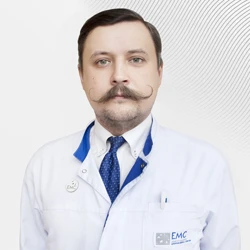

.webp)

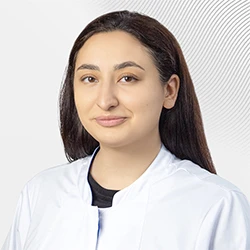
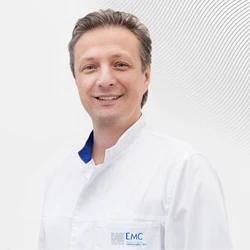
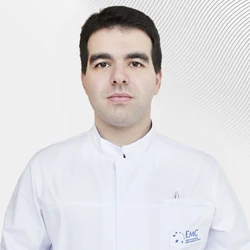
.webp)


